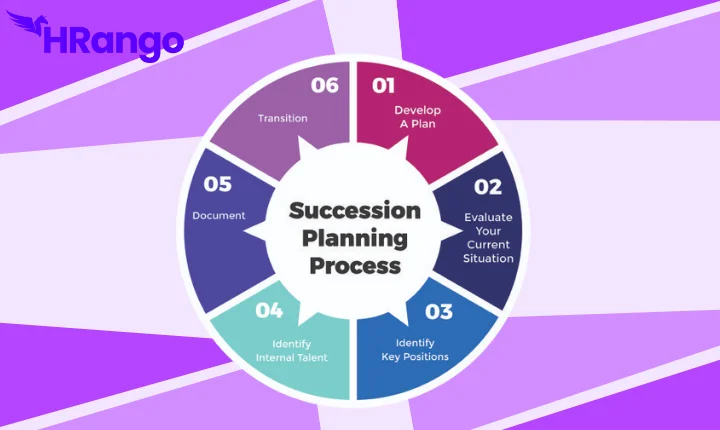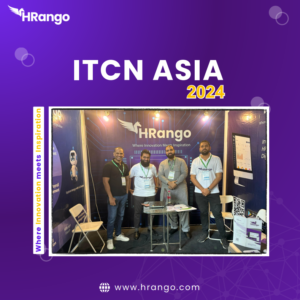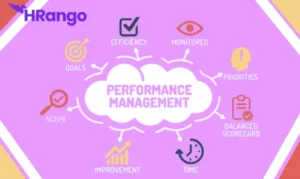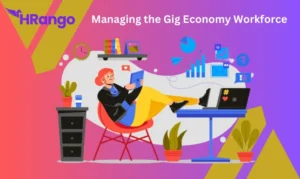Succession planning and leadership development are two critical aspects of human resource management that ensure the sustainability and growth of an organization. With the increasing complexity of business environments, it has become essential for organizations to have a robust system in place to identify, nurture, and develop future leaders. Human Resource Management Systems (HRMS) like hRango play a pivotal role in this process by streamlining and optimizing the entire succession planning and leadership development framework.
The Importance of Succession Planning
Succession planning is the process of identifying and developing internal employees with the potential to fill key leadership positions within the organization. This strategic approach ensures that the company has a ready pool of qualified candidates who can step into critical roles as they become available. Effective succession planning helps organizations avoid the pitfalls of sudden vacancies, minimize disruption to operations, and maintain a steady flow of leadership talent.
However, traditional succession planning processes can be cumbersome, time-consuming, and prone to biases. This is where HRMS platforms like hRango come into play, offering a data-driven, efficient, and transparent approach to succession planning.
How hRango Enhances Succession Planning
hRango is a cutting-edge HRMS platform designed to facilitate all aspects of human resource management, including succession planning. Here’s how hRango can help organizations enhance their succession planning efforts:
- Data-Driven Decision Making: hRango collects and analyzes vast amounts of employee data, including performance metrics, skills assessments, career aspirations, and more. This data-driven approach allows HR professionals to make informed decisions about who should be considered for leadership roles.
- Talent Pool Identification: hRango helps in identifying high-potential employees who are suitable for future leadership roles. By analyzing employees’ performance history, skills, and competencies, hRango can create a pool of candidates who are likely to succeed in key positions.
- Individual Development Plans (IDPs): hRango allows HR professionals to create customized IDPs for high-potential employees. These plans outline the specific skills, experiences, and training required for the employee to advance into a leadership role.
- Real-Time Monitoring: hRango provides real-time monitoring of employee development and progress toward succession goals. This ensures that any gaps in development are identified early and addressed promptly.
- Minimizing Bias: By using objective data and algorithms, hRango reduces the risk of bias in succession planning. This ensures that all employees have an equal opportunity to be considered for leadership roles based on merit.
The Role of HRMS in Leadership Development
Leadership development is closely linked to succession planning. It involves the continuous process of enhancing the skills, knowledge, and abilities of employees to prepare them for future leadership roles. HRMS platforms like hRango are instrumental in creating a structured and scalable leadership development program.
Key Features of hRango for Leadership Development:
- Training and Development Programs: hRango allows organizations to design and implement customized training and development programs tailored to the needs of future leaders. These programs can include workshops, online courses, mentoring, and coaching sessions.
- Competency Mapping: hRango helps in mapping the competencies required for leadership roles. It then identifies the gaps in the current skill set of employees and suggests relevant training programs to bridge these gaps.
- Performance Management: hRango integrates performance management with leadership development. It provides continuous feedback and performance evaluations, helping employees understand their strengths and areas for improvement.
- Career Pathing: hRango offers career pathing tools that allow employees to visualize their potential career trajectories within the organization. This not only motivates employees but also aligns their development with the organization’s long-term goals.
- Mentorship Programs: hRango facilitates the creation of mentorship programs where experienced leaders can guide and mentor high-potential employees. This knowledge transfer is crucial for developing future leaders who are aligned with the company’s values and culture.
Case Study: hRango’s Impact on Succession Planning and Leadership Development
Consider a mid-sized technology firm that implemented hRango to enhance its succession planning and leadership development. Before hRango, the company faced challenges in identifying potential leaders, resulting in a lack of readiness when key positions became vacant. The succession planning process was manual, subjective, and often led to internal conflicts.
After implementing hRango, the company experienced significant improvements:
- Increased Transparency: The process became more transparent, with clear criteria and data-driven insights guiding succession decisions. Employees felt more confident in the fairness of the process.
- Improved Talent Retention: High-potential employees were identified early and given personalized development plans. This increased their engagement and loyalty to the company, reducing turnover rates.
- Seamless Transitions: When leadership roles became vacant, the company was able to fill them quickly and effectively with pre-identified successors who were well-prepared for the role.
- Enhanced Leadership Pipeline: Over time, the company built a robust leadership pipeline, ensuring that it always had a pool of qualified candidates ready to step into critical roles.
Conclusion
HRMS platforms like hRango are revolutionizing the way organizations approach succession planning and leadership development. By leveraging data and automation, HRango helps companies identify, develop, and retain top talent, ensuring a seamless leadership transition and long-term organizational success.
FAQs
1. What is succession planning, and why is it important?
Succession planning is the process of identifying and developing employees to fill key leadership roles in the future. It is important because it ensures organizational continuity and reduces the risk of disruption when key positions become vacant.
2. How does hRango help in succession planning?
hRango uses data-driven insights to identify high-potential employees, create individual development plans, and monitor progress, making the succession planning process more efficient and transparent.
3. What role does HRMS play in leadership development?
HRMS platforms like hRango facilitate leadership development by offering tools for training, competency mapping, performance management, and mentorship, helping employees prepare for future leadership roles.
Can hRango reduce bias in succession planning?
Yes, hRango minimizes bias by using objective data and algorithms to guide succession decisions, ensuring that all employees have equal opportunities based on merit.
How does hRango improve employee retention?
By identifying and developing high-potential employees early, hRango increases their engagement and loyalty, leading to higher retention rates.







